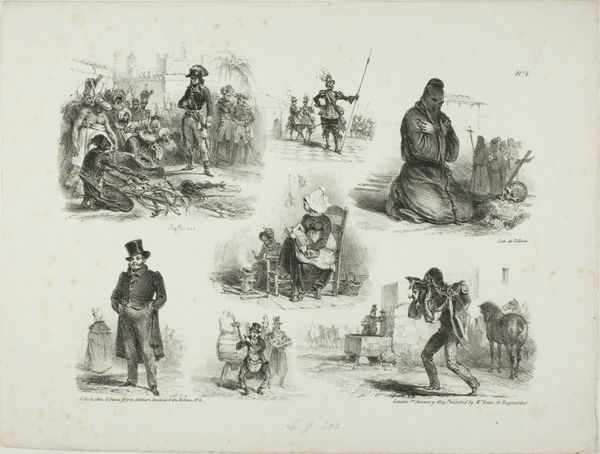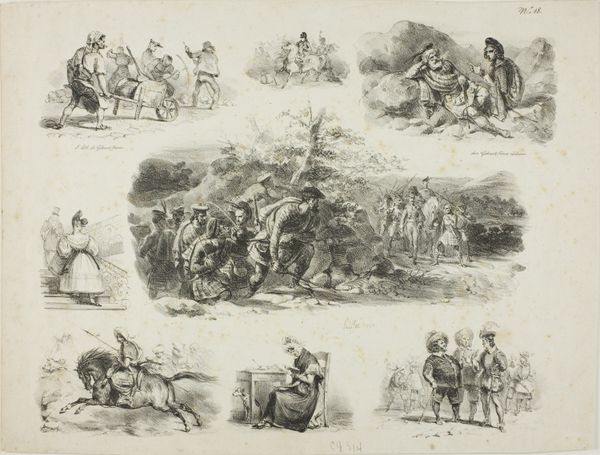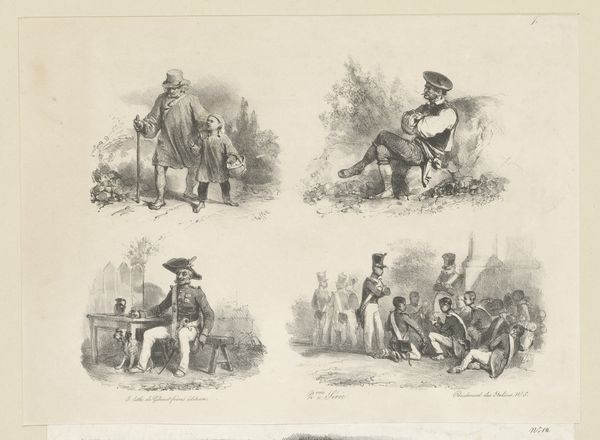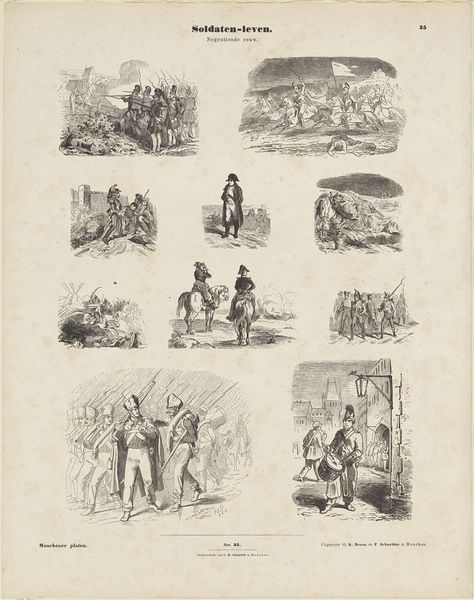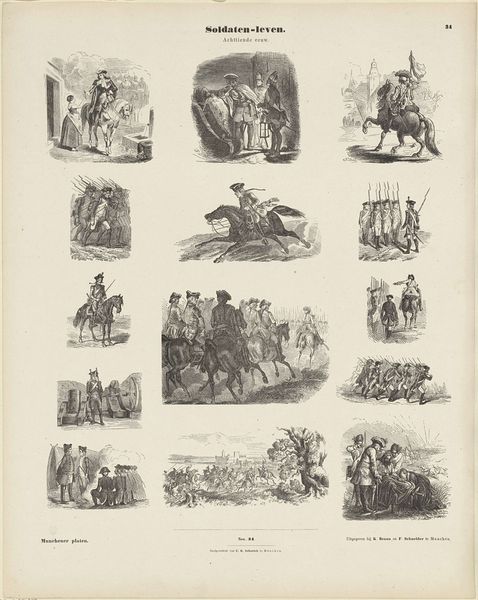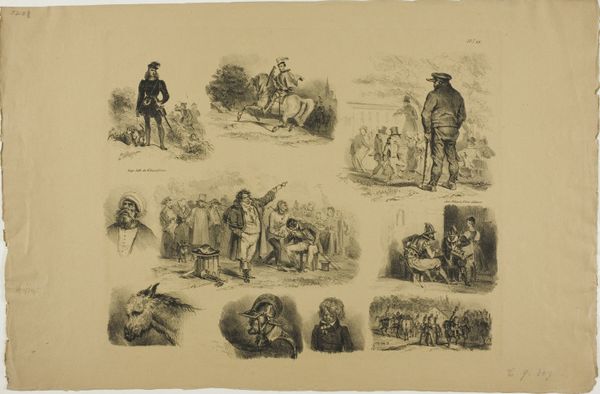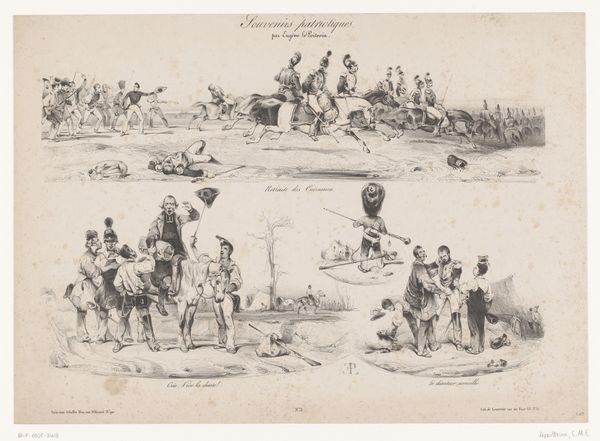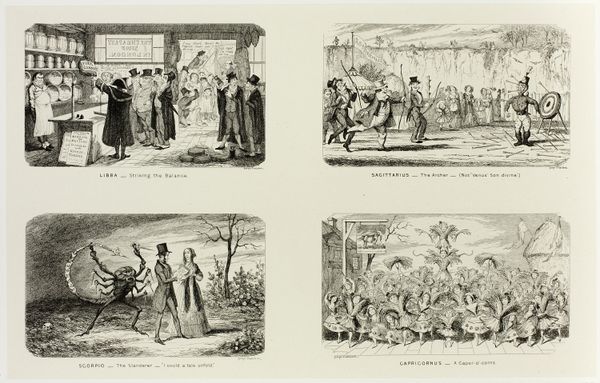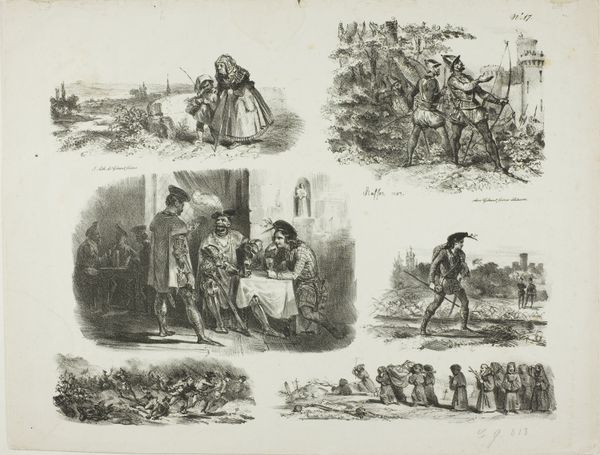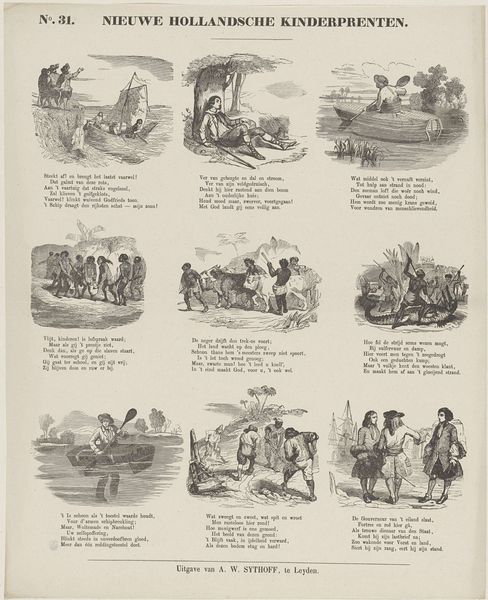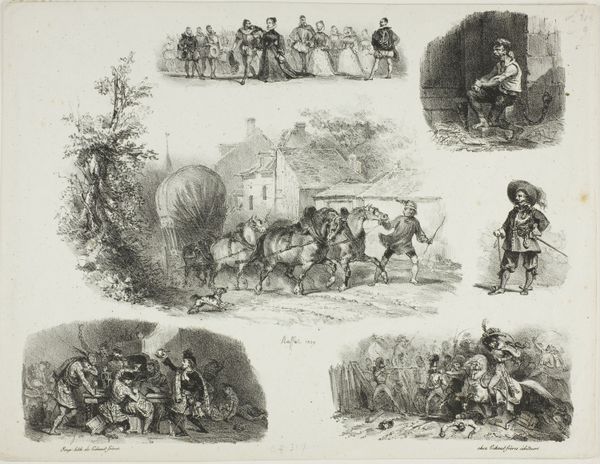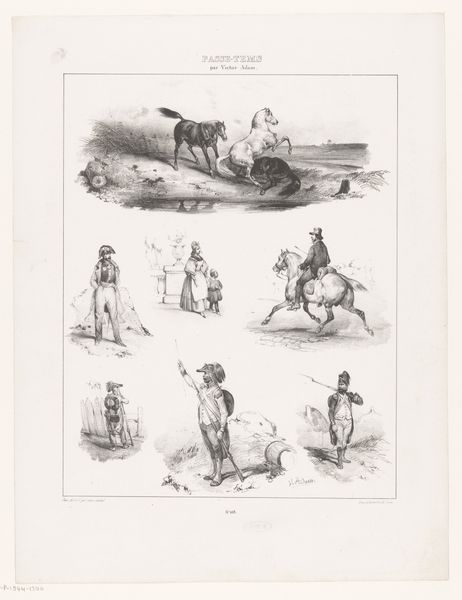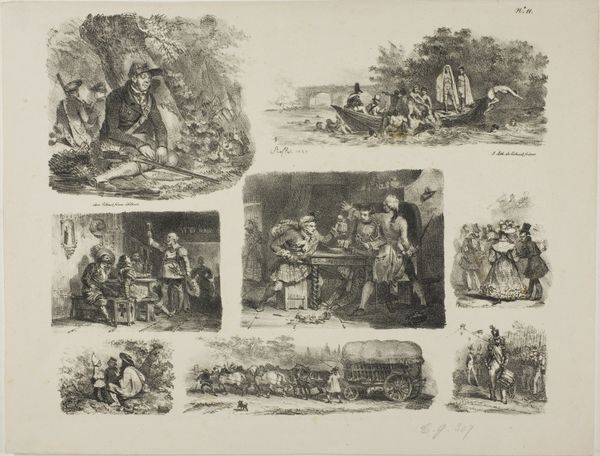
drawing, graphic-art, lithograph, print, paper
#
drawing
#
graphic-art
#
narrative-art
#
lithograph
# print
#
paper
#
history-painting
Dimensions: 241 × 297 mm (image); 263 × 349 mm (sheet)
Copyright: Public Domain
Editor: So, here we have Auguste Raffet’s "Sheet of Sketches," created in 1829. It’s a lithograph, so a print on paper, and it feels like a series of snapshots from different historical dramas, all crammed onto one page. I’m initially drawn to the incredible detail despite the small scale. What stands out to you in this piece? Curator: It’s funny you say snapshots, because that’s precisely the vibe, isn't it? Imagine Raffet, flipping through the history books and yelling, "Hold that pose!" to some bewildered medieval extras. I'm struck by how dynamic each little scene is. The central image of the duel is like a mini-tornado of steel and desperation. It makes me wonder what Raffet was reading, what captured his imagination so vividly. Editor: Definitely! It’s almost like storyboarding for historical paintings, each with such dramatic poses. Were these studies for larger works, or do you think this "sheet" was meant to be a finished piece in itself? Curator: Ah, the million-dollar question! Considering his broader body of work, I think it more likely that it served as a place to germinate narrative scenes; a playground to imagine larger themes. Plus, Raffet was active during a time when lithography was making art more accessible – does that influence how you feel about it? Editor: I guess it does! Knowing that this print would have made these historical narratives available to a wider audience shapes how I see them, like mini history lessons sold on the street. It also has some violent vignettes which are definitely not mini history lessons… So I imagine those created discussion points! Curator: Precisely! That is it! I love the way you noticed it also! It's this blend of high-minded historical painting made accessible, almost disposable, like a newspaper filled with battles and beheadings. And perhaps that's part of the genius of Raffet – taking the grand and making it intensely personal, a single sheet holding the weight of entire eras. Editor: I agree, seeing these epic moments distilled onto one sheet makes them feel all the more immediate and captivating. Thanks so much, I will remember this "snapshot in time" approach when analyzing narrative themes going forward!
Comments
No comments
Be the first to comment and join the conversation on the ultimate creative platform.
